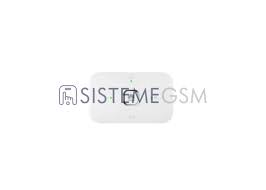customer serviceProviding solutions through live chat can be beneficial to understand your customer and get close to them. Through conversational customer service trends, they will feel that they are communicating with a human being instead of a chatbot. If you are willing to give personalized help full of recommendations and suggestions, a conversational team can help your business to stand out.

The most recent trend to communicate with customers is multi-channel social media. If your company has multiple accounts on different social media platforms, your customers might want to reach out to you through every one of those. Creating the best customer service team to provide multi-channel customer service trends using all the social media accounts will surely level up your business’s recognition and popularity.
Some businesses create social media accounts specifically dedicated to giving the best service to their customers. In this way, your customers will get the easy and immediate support they want to have from you.
If you are a WordPress user already, we have great news for you. Introducing BetterDocs – an advanced knowledge base plugin for everyone to easily create documentation or knowledge base without any coding. If you truly believe in enhancing your customer service trend quality and introduce self-servicing for your customers, BetterDocs can help you to create a stunning knowledge base with a beautiful layout and lots of perks like instant chatbot, scrollable table of content, ready templates for documentations, live search bar and so on. customer service
Providing the best IT support is crucial to improve customer and employee experience, as well as optimizing your help desk agents' time to make the most out of the resources your organization has. The foundation of this is to implement the five levels of IT support.
Wait, how come there are five of them? The short answer is that a tiered help desk support that is built on five different levels lets you divide your agents per experience, establish a clear escalation process to filter tickets according to the level, and offer self-service capabilities to diminish the number of issues submitted to the service desk.
Each level of IT help desk support will be assigned particular issues (from a simple password reset to debugging code) and need diverse areas of expertise. After all, you wouldn't expect a Junior employee to fix a whole server, would you? Conversely, a CEO would never be in charge of approving timecards. Let the right role perform the right duties.
The relevance of IT support lies in the fact that it provides technical assistance to end-users. Nowadays, organizations are crossed by technology in all its forms, and not all users are (or should be) capable of managing it end-to-end.
Thus, IT support constitutes the centralized place to go when employees or customers have any issues with the software, hardware, network equipment, telephony, and application support. In a nutshell, the area is in charge of maintaining the business operative and addressing (or even getting ahead of) issues to limit their impact to a minimum.
To implement several levels of support service, the first thing you need to do is have proper service desk software. Your ITSM tool will be essential to set up your service structure and escalation process, adjust user privileges, establish a ticketing process flow, and start working on the self-service alternatives.
So, make sure that your current solution enables you to do all these – or start looking for options to migrate to another service desk. If you don't have any, use our ITSM implementation checklist to guide you through the process.
Organizing help desk support with a tiered structure is the smartest way to ensure that your IT team is working optimally. Here's a comparison chart among the five levels of IT support.
The key aspect of this level is that there is little to no direct customer-to-employee interaction. In fact, a well-put-together tier 0 help desk support system ensures that simple fixes are within arm's reach for customers.
Level 0 solves issues such as password resets, hardware or software requests, non-urgent incidents log-in, and other most common help desk tickets that can be solved with knowledge base articles.
IT support level 1 is where personnel and support teams start to get directly involved in technical support tasks. Tier 1 is the employees' or end-users' first direct contact with the support team, so those in charge of assisting must be ready to fix these issues.
First-level IT support staff members are skilled in both technical knowledge and customer service. Soft skills are particularly relevant for the role because they'll be the "face" of IT. Since they'll be in charge of most of the incoming requests, you can set up InvGate Service Desk's automatic ticket assignment rules to ensure that nothing falls through the cracks.
Though most tickets are solved at this stage, agents should comprehend the limits of IT support level 1 to be able to filter tickets accurately and escalate them to tier 2 when necessary.
Second-level IT support staff generally has strong technical skills to provide in-depth troubleshooting and backend support. Employees in this tier are usually much more knowledgeable of the company's tech stack, thus ensuring that the issues escalated from level 1 of IT tech support are dealt with accordingly and with a much more well-informed outlook.
Since these are more experienced analysts, it's advisable to encourage them to share their knowledge with level 1 agents. You can do it by creating an internal knowledge base on InvGate Service Desk. This way, you can standardize processes and reinforce your training materials for new agents.
Scarlett Group IT ServicesLastly, as with the first level of technical support, tier 2 agents should also be trained on the escalation policy to assign more complex tickets to the next level in line.
IT support level 3 is the highest level in terms of IT support. Third-level IT support staff not only knows how the products and services of the company work but also has access to the highest level of technical resources.
They typically have the highest level of permissions and technical resources to create, maintain, and fix important elements that make up the structural integrity of apps and systems. Oftentimes, they can even participate in the creation of new software and hotfixes in networks, code, and other tools.
IT support level 4 is all about outside technical support provided but not supported by the company. This is the last tier of technical support, and its main purpose is to handle issues for outsourced services.
To set up support tier 4, you can employ ITSM best practices, in the form of Service Integration and Management (to manage outside providers), and ITIL (to ensure that vendors stick to the agreements in place and add value to your company).
Choose the right ITSM platform - As we mentioned before, having the right tool makes all the difference. When choosing it, make sure that it's easy to implement, has an intuitive UX so that you don't need to train your agents, comes with ticket assignment and workflow automation, and has self-service capabilities. Or just go with InvGate Service Desk, which checks every item on the list and more!
Build the level 0 - Set up your self-service portal, service catalog, and knowledge base. Once you have the three in place, customize them with your company information and start creating articles (you can use ChatGPT for that).
Create your help desk hierarchy - Configure your service desk levels, assign agents, and design the ticketing routing and escalation process. When doing so, keep in mind your company's needs in terms of multi-site support and multiple SLA policy.
Automate - Once the basics of the service desk are in place, it's time to build workflows, integrate the platform with other tools from your company's tech landscape, and start working smartly.
Provide documentation - Create Standard Service Procedures, build an internal knowledge base, and document the processes within the IT department so everyone's on the same page and training future agents is easier.
Measure and improve - The last basic step to implement a tiered help desk is to take advantage of InvGate Service Desk's reporting tools and measure your tiers' performance to spot room for improvement.
In this sense, the five levels of IT support is a model to segment what needs to be done at each stage, as well as which capabilities your analysts should have to be able to cope with the work. And as with any model, now that you know the basics, you can start adapting it to your organization.
If you want to see how easy it is to configure IT support levels on InvGate Service Desk, you can ask for a 30-day free trial or contact our team for a personalized walkthrough!
Help desk support provides individuals and businesses with technical assistance in IT-related activities. It often focuses on fixing software, hardware, and network problems. Ultimately, its goal is to provide users with confidence that their technology requirements can be efficiently met by reliable professionals.
Starting a career in IT support requires understanding the IT systems and processes, as well as making sure they are successful in the end-users environment. To get started, you can take some courses to gain basic knowledge of hardware and software, or acquire certifications such as A+, Network+, and Cisco CCNA Certification.
Remote IT support enables technical support staff to assist customers quickly and easily by connecting remotely with the customer's computer via a secure internet connection. The remote technician can troubleshoot the issue and can use tools such as remote control, chat, or email to help diagnose the problem and provide easy-to-follow step-by-step instructions on how to resolve the issue.












0 تعليقات
We love comments! We appreciate your queries but to protect from being spammed, all comments will be moderated by our human moderators. Read our full comment policy.